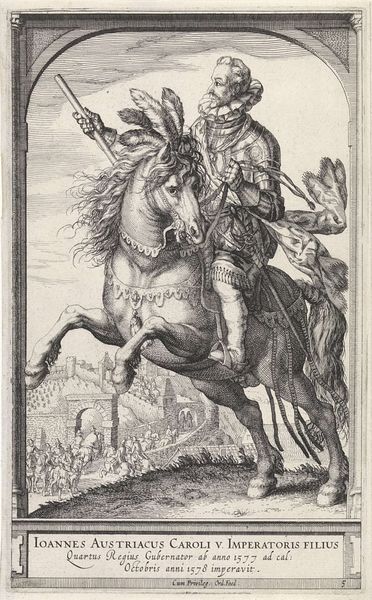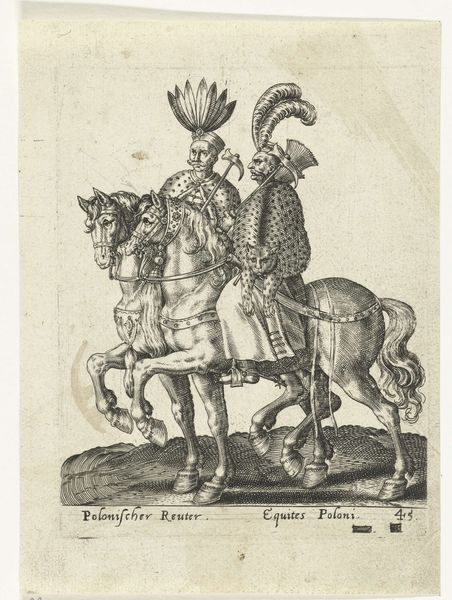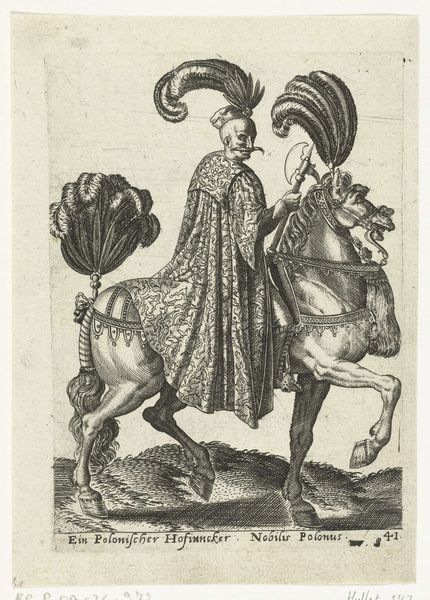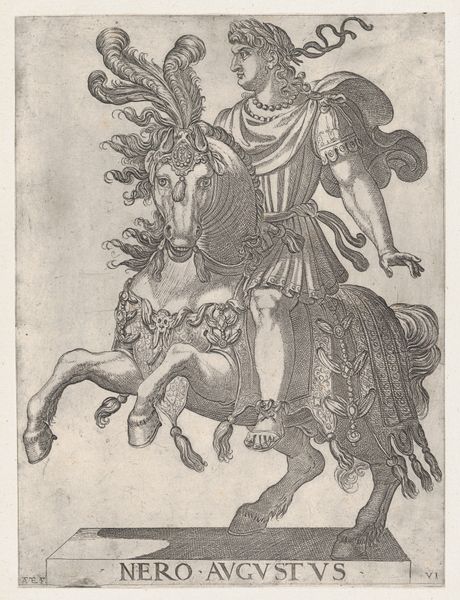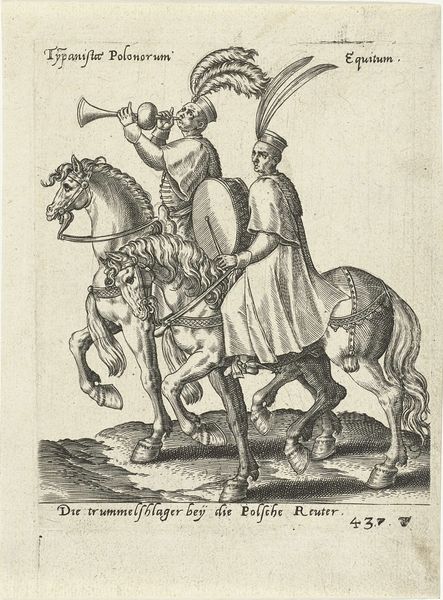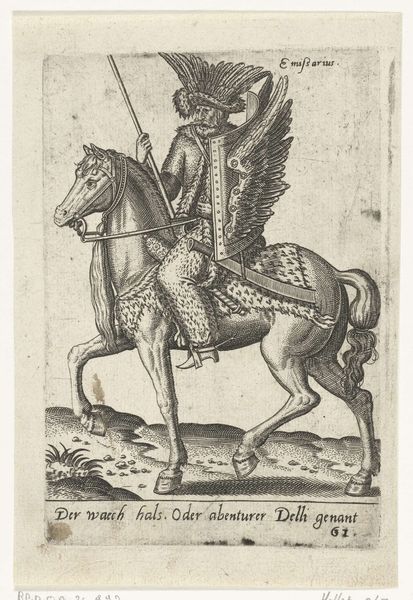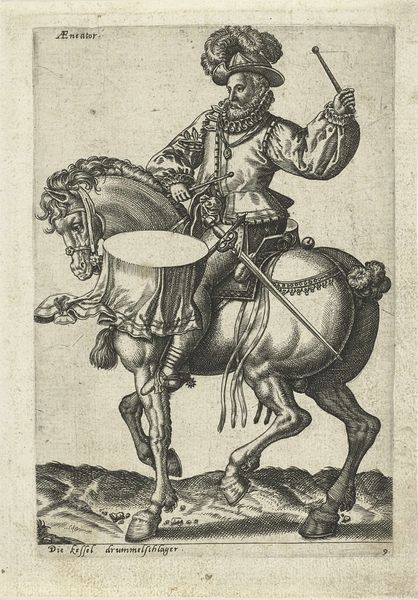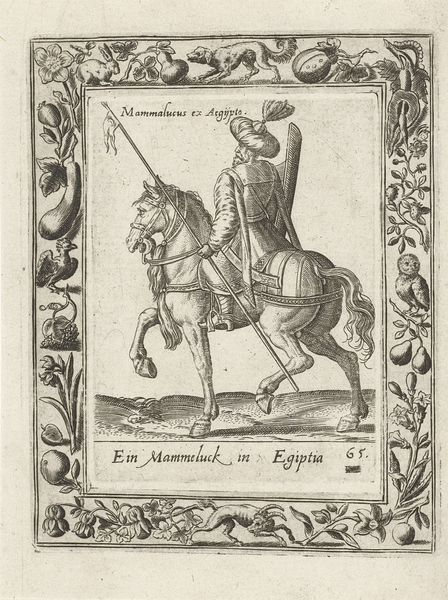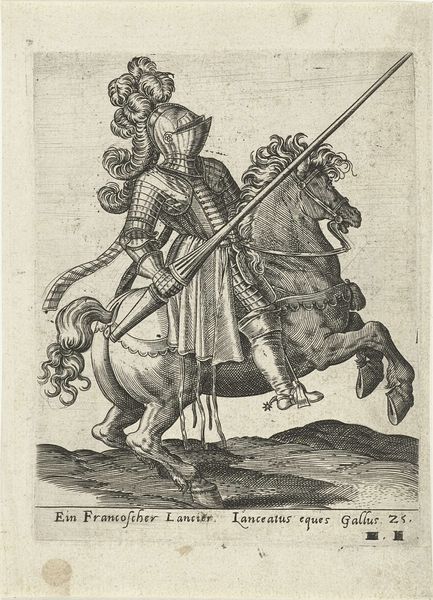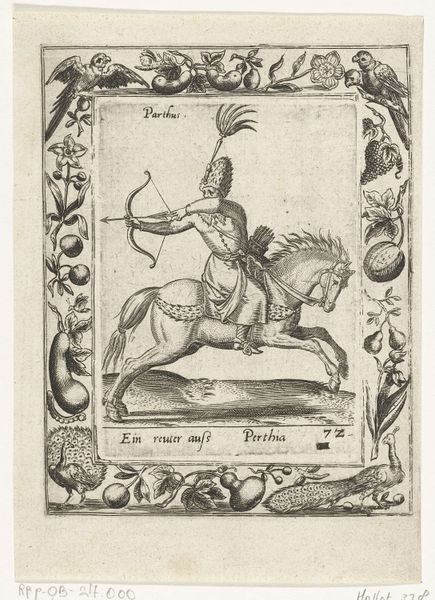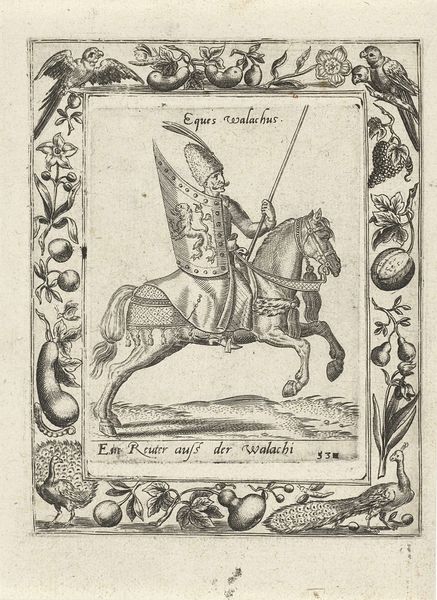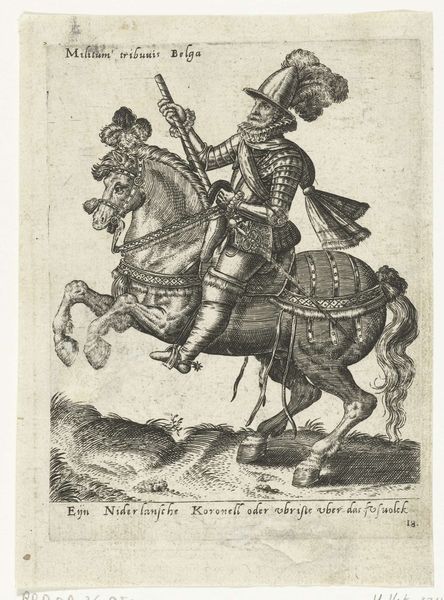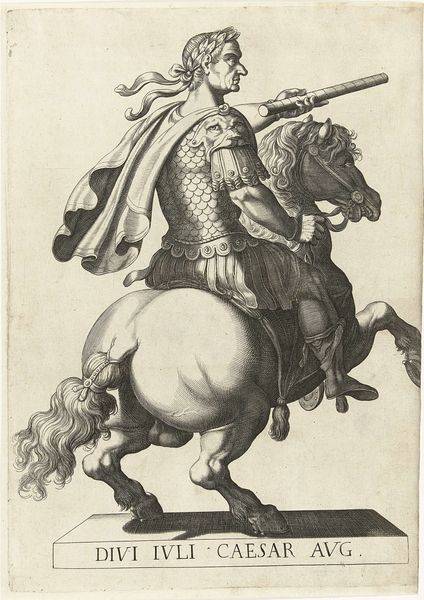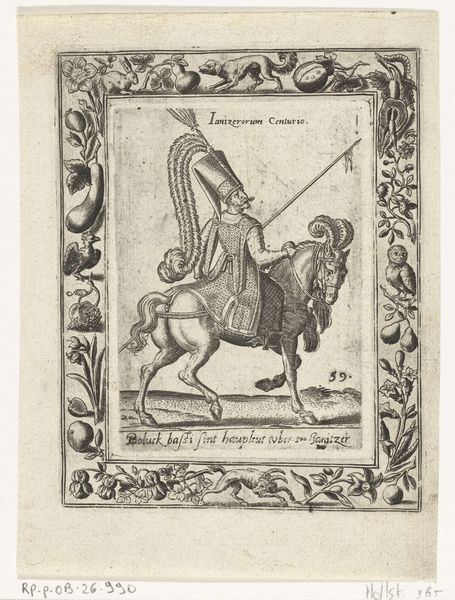
drawing, print, metal, engraving
#
portrait
#
drawing
# print
#
metal
#
pen sketch
#
old engraving style
#
mannerism
#
history-painting
#
engraving
Dimensions: height 147 mm, width 109 mm
Copyright: Rijks Museum: Open Domain
Curator: Before us is a 1577 engraving by Abraham de Bruyn, titled "Hongaarse Edelman te Paard," which translates to "Hungarian nobleman on horseback." Editor: It's quite striking! The level of detail, especially considering the medium, is remarkable. But there's almost a cartoonish quality, wouldn't you say? A sort of stiffness? Curator: That tension between detail and stylistic representation is key to understanding the work's function within its social context. De Bruyn was part of a larger movement in the late 16th century producing these "costume books," visual records of the dress and customs of different nations. Think of it as early ethnographic data presented as spectacle. Editor: So, it's as much about displaying material culture as it is about artistic expression. I am drawn to how the engraver rendered textures—look at the horse’s mane and the nobleman's feathered headdress, the etched lines become almost tactile. It makes me think about the labor involved. How many hours of focused work went into translating textile and material details into this form? Curator: Exactly! The print served as a tool for circulating visual knowledge, allowing viewers to consume imagery of far-off lands and their inhabitants. In a way, the "Hungarian nobleman" becomes a symbol, a signifier of Hungarian identity, filtered, of course, through the lens of Western European expectations. Editor: Yes, a constructed identity. The choice of metal for engraving adds a layer, too, doesn't it? Metal, with its associations of trade, craftsmanship, and even weaponry. There's a subtle statement there, about power, wealth, and the movement of materials and ideas. Curator: Precisely. Furthermore, remember that images like this contributed to the formation of early modern European identity, often through comparison with, and sometimes the disparagement of, "foreign" cultures. Editor: And, from the Materialist point of view, the engraving's reproduction makes it accessible and distributable, democratizing to some degree, this "information" to a wide populace that had no actual exposure to Hungarian noblemen and aristocracy. Curator: It highlights how prints served as crucial sites for negotiating cultural differences and power dynamics in the 16th century. This piece offers a window into the complex interplay between art, identity, and early forms of globalization. Editor: Seeing it this way certainly underscores how even seemingly straightforward images contain a world of implications regarding material process and cultural power. It changes your perspective.
Comments
No comments
Be the first to comment and join the conversation on the ultimate creative platform.
